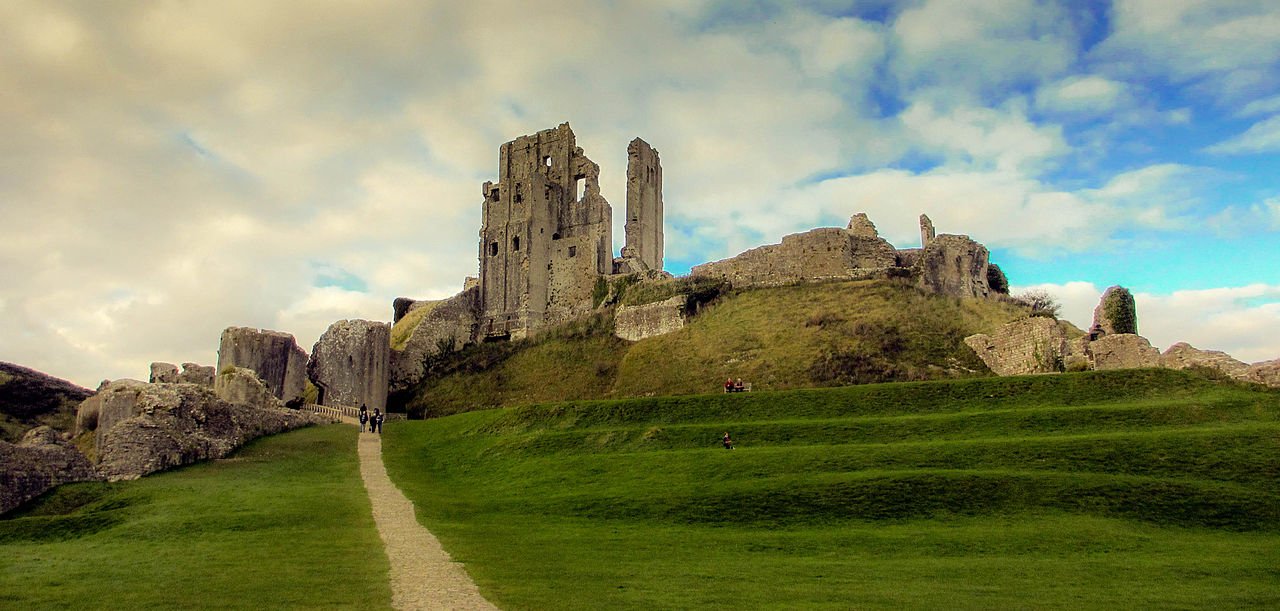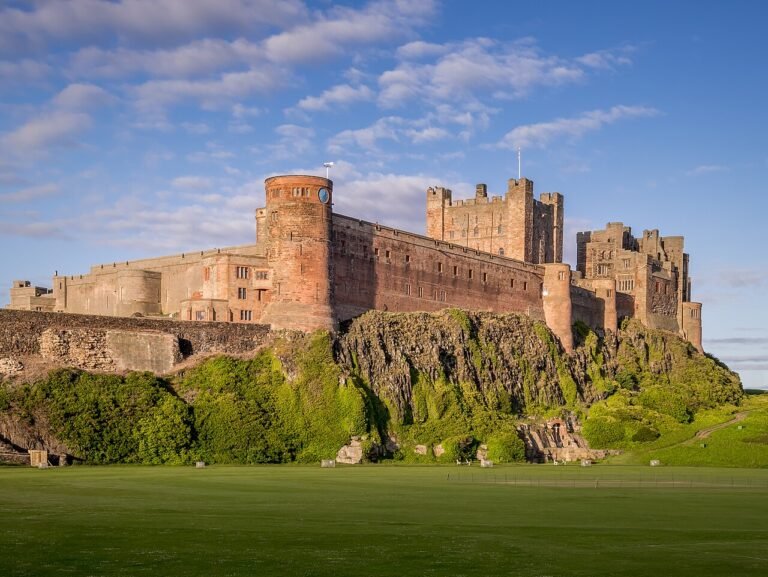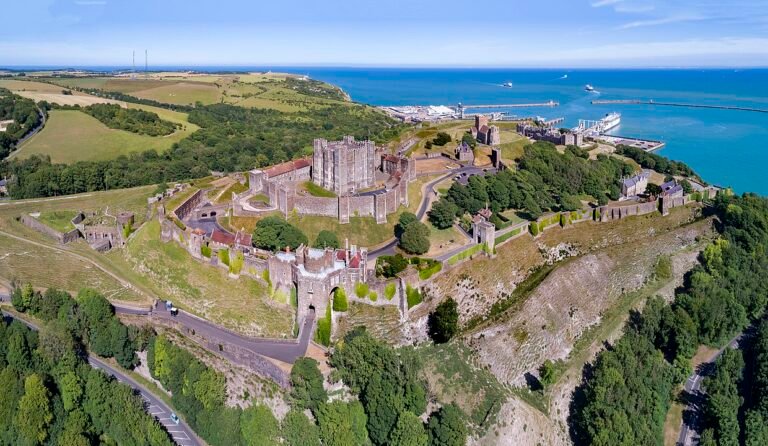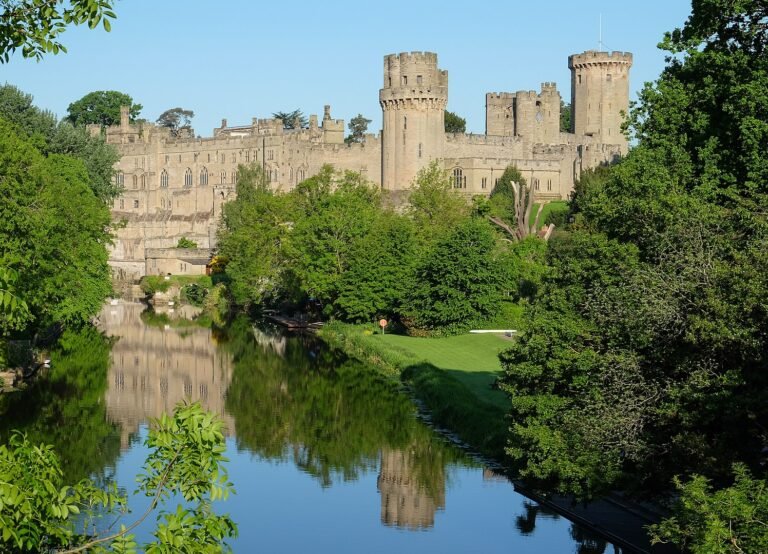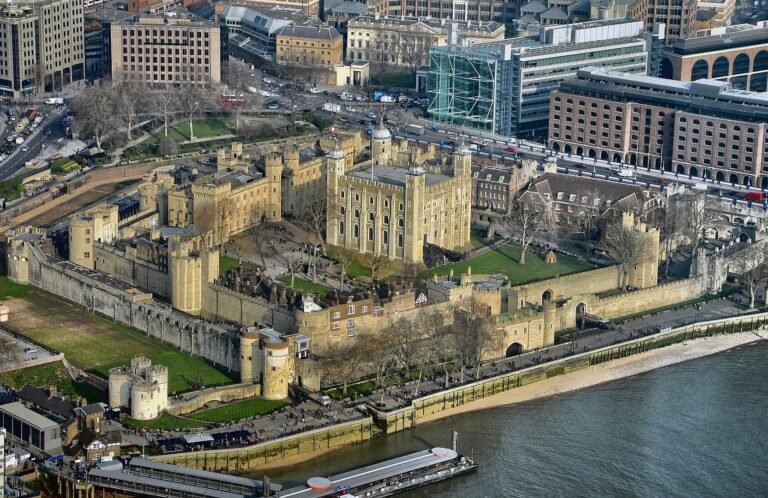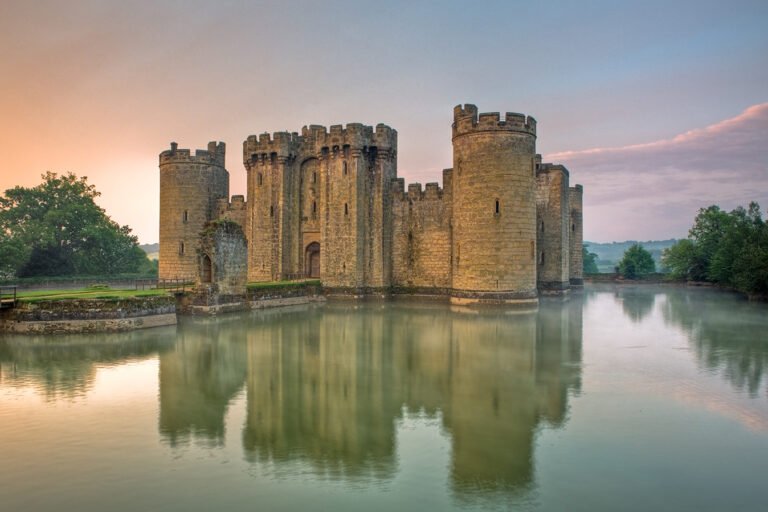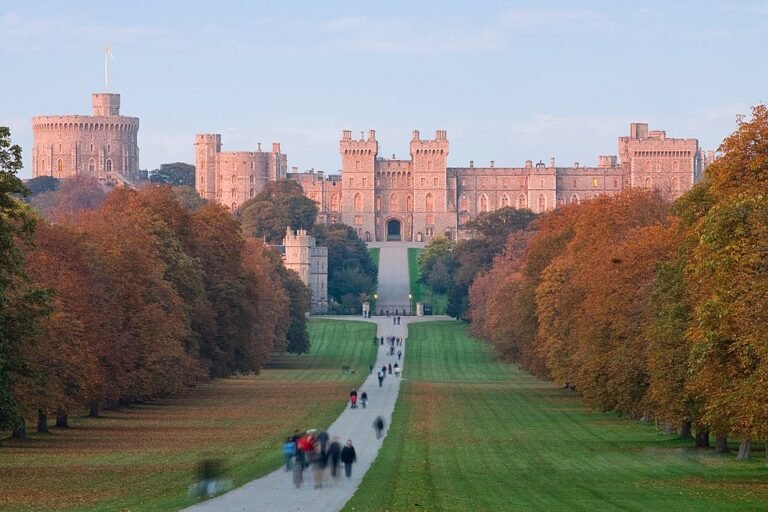Corfe Castle: A Timeless Jewel of Dorset’s Heritage
Corfe Castle: When it comes to heritage, drama, and romance rolled into one, Corfe Castle stands apart as a ruin that captures centuries of English history in its weathered stones and windswept ruins. Perched atop a grassy mound on the Isle of Purbeck, this former royal fortress is one of Britain’s most evocative and enduring landmarks, offering a spellbinding blend of royal intrigue, military might, and pure countryside beauty. Whether you’re a history buff, nature lover, family traveller, or romance seeker, Corfe Castle delivers on all fronts.
Corfe Castle: A Storied Past – From Saxon Tragedy to Norman Stronghold
A Sinister Beginning
Long before the castle rose in stone, the site was shrouded in monarchy and betrayal. In 978 AD, it is believed that King Edward the Martyr was murdered here in a sinister plot orchestrated by his stepmother Aelfthryth to pave the way for her son Ethelred (later remembered as “the Unready”) to ascend the throne.
William the Conqueror’s Legacy
In the aftermath of the Norman Conquest, William the Conqueror chose this commanding hilltop to erect the first phase of Corfe Castle. Unusually, he built it in stone rather than wood, marking it as one of the earliest stone Norman castles in England, a reflection of its strategic importance.
Royal Residence and Fortress
Henry I, William’s son, expanded the castle in the early 12th century with a luxurious stone keep, later called the King’s Tower, complete with an “appearance door” from which the king could be seen by his subjects below.
Corfe Castle: Epic Siege and Civil War Downfall
By the 17th century, Corfe Castle belonged to Sir John Bankes, Attorney General to Charles I. While Sir John fought for the king elsewhere, Lady Mary Bankes held the castle under two sieges led by Parliamentarian forces. Dubbed “Brave Dame Mary,” she defied the attackers until betrayal by one of her own officers led to the castle’s fall in 1643–1645.
In 1646, the Parliamentarians deliberately slighted, that is, partially demolished, the castle to ensure it could not serve as a future royalist stronghold. The ruins you see today are the result of that purposeful destruction.
Corfe Castle: The Romantic Ruin and Modern Revival
From tragedy emerged romance. The dramatic ruins of Corfe Castle became an artistic inspiration, featured in works by J.M.W. Turner and reportedly serving as the model for Kirrin Castle in Enid Blyton’s Famous Five series.
In 1982, the entire estate, including Corfe Castle and the nearby Kingston Lacy, was generously donated to the National Trust by the Bankes family, ensuring the site’s preservation for future generations.
Visiting Today: What Awaits You
Opening Hours & Access
Corfe Castle is typically open daily, 10 am to 5 pm in summer (extended during peak periods) and 10 am to 4 pm in winter. Be aware that opening hours may vary. Check the National Trust website before your visit.
Tickets & Entry
Entry is ticketed, and during summer afternoons, visitors can often benefit from discounts (for example, after 2.30 pm).
Highlights & Experiences
- Ruins & Architecture: Wander through arrow slits, murder-hole galleries, archways, and the remains of the Norman Hall in the West Bailey.
- King’s Tower Reopened: After 378 years, a temporary viewing platform now grants access to Henry I’s Tower. Visitors can glimpse the king’s “appearance door” and take in sweeping panoramic views.
- Events & Trails: From falconry and medieval reenactments to haunting evening light-ups during the festive season, the castle hosts a lively events calendar.
Corfe Castle: Visitor Essentials & Practical Tips
Getting There
- By Car: Reachable via the A351 from Wareham or Swanage. Parking is available in the village and near the castle; arrive early during summer to secure a spot.
- By Train & Bus: Take a train to Wareham, followed by the Purbeck Breezer 40 bus. Alternatively, board the heritage Swanage Railway steam train for an atmospheric and nostalgic journey that ends at Corfe Castle station.
Village Attractions
The charming village of Corfe Castle offers:
- A Model Village recreating the castle and settlement as they appeared in 1646.
- Shops, tearooms, pubs (like the historic Greyhound Inn), and the National Trust tearoom and gift shop in Grade II-listed buildings.
- Annual traditions like the Shrove Tuesday Football Ceremony, held in the tiny Town Hall (one of the smallest in Britain).
Staying & Dining Locally
Stay in a cosy B&B, self-catering cottage, glamping site, or even the historic Mortons House Hotel, a Grade II* listed building dating from 1590. For food, you’ll find tearooms, pubs, and cafés in the village, many with views of the castle ruins.
Walks & Outdoor Pursuits
- The Purbeck Ridgeway offers dramatic walking routes with sweeping vistas over Swanage, Poole Harbour, and the Isle of Wight.
- Shorter scenic walks across Corfe Common showcase Bronze Age burial mounds and local wildlife.
Sample Itineraries
Day Trip Itinerary – Family or Solo Visitor
- Arrive via Swanage Railway or by car.
- Tour the ruins, explore the King’s Tower, and enjoy far-reaching views.
- Pause at the National Trust tearoom or village café.
- Explore the model village and local shops.
- Take a gentle wander across Corfe Common at sunset.
Two-Day Romantic/Heritage Loop
- Day One:
- Morning arrival and a full guided tour of the castle and village.
- Afternoon walk along the Purbeck Ridgeway.
- Evening dinner at a local pub or stay at Mortons House Hotel.
- Day Two:
- Morning steam train ride to Swanage, seaside strolls.
- Visit Kimmeridge Bay or Etches Museum for marine fossils.
- Return by bus or walk via the coastal path.
Why Corfe Castle Matters – Beyond the Ruins
- Heritage Tourism: A perfect reflection of England’s layered history from Saxon roots to Norman grandeur, Civil War drama, and Victorian romanticism.
- Natural Beauty: Its setting on the Purbeck Ridge gives it a scenic allure unmatched by many inland castles.
- Cultural Resonance: From Blyton’s literary landscapes to Turner’s canvases, Corfe Castle has inspired generations.
- Accessible Conservation: The National Trust’s ongoing £2 million conservation project, which includes reopening the King’s Tower, confirms the site’s relevance and resilience.
In Conclusion
Corfe Castle isn’t just a ruin, it’s a narrative in stone, echoing a millennium of English history. Whether you’re exploring its rugged walls, ascending the revived King’s Tower, savouring a hot scone in the tearoom, or wandering the nearby ridgeways, every moment resonates with stories of kings, warriors, artists, and everyday people. It is a destination that rewards curiosity, imagination, and quiet wonder, one that rightly earns a place on any high-end travel platform’s must-visit list.
FAQs: Corfe Castle
What is the history behind Corfe Castle?
Corfe Castle dates back to the 11th century, built by William the Conqueror as one of England’s earliest stone castles, strategically placed on a gap in the Purbeck Hills. It has seen pivotal moments in English history, from royal residence and stronghold, through sieges and Civil War drama, to its partial destruction in 1645–46
Why is Corfe Castle famous?
Its fame stems from its dramatic history, a royal Norman fortress, a resilient Civil War bastion defended famously by Lady Mary Bankes, and now an evocative ruin under the care of the National Trust
How long does it take to visit Corfe Castle?
A typical visit takes around 1–2 hours if you’re exploring at a relaxed pace. Factor in longer if you’re taking photos, visiting exhibitions, or attending events
Can I bring my dog to Corfe Castle?
Yes! Well‑behaved dogs on leads are welcome all year round at Corfe Castle
How was Corfe Castle destroyed?
In March 1645, following the English Civil War, Parliament ordered the castle to be deliberately “slighted”, i.e., partially demolished, to ensure it wouldn’t serve as a future royalist stronghold. That damage remains visible today
What are the parking arrangements at Corfe Castle?
The National Trust’s car park at the Castle View Welcome Centre (BH20 5DR) allows free parking for members (with ticket scan) and paid parking for non-members. In high season, village parking is limited. Alternatively, park at Norden Park & Ride (£4 approx.), then walk or board the Swanage Railway
What is the Shrove Tuesday Football Ceremony in Corfe Castle?
This quirky annual tradition marks the induction of new apprentices into the Company of Marblers and Stonecutters of Purbeck. Participants kick a football (without using hands) along historic routes from the Fox Inn to Town Hall, ending with a symbolic pepper rent at Ower Farm—a centuries‑old rite preserving local heritage
